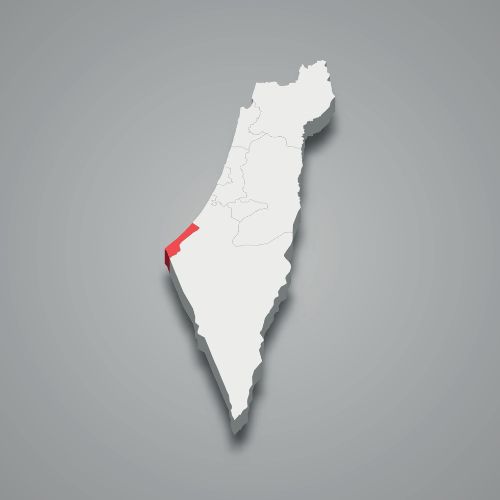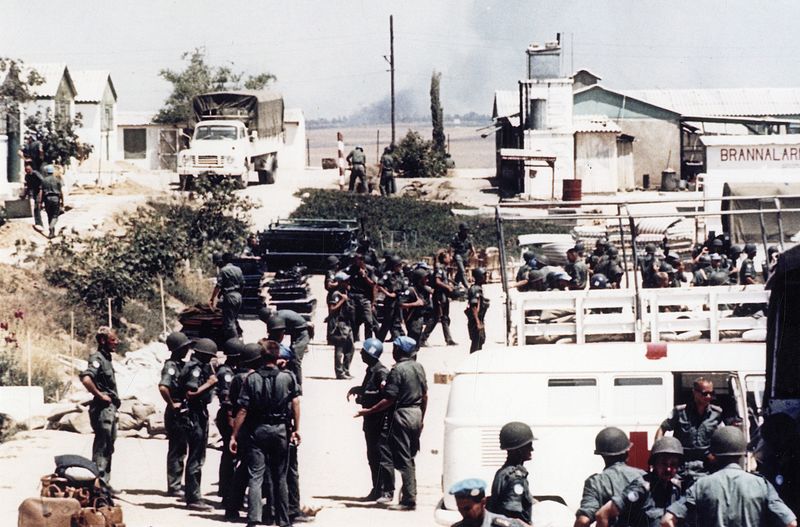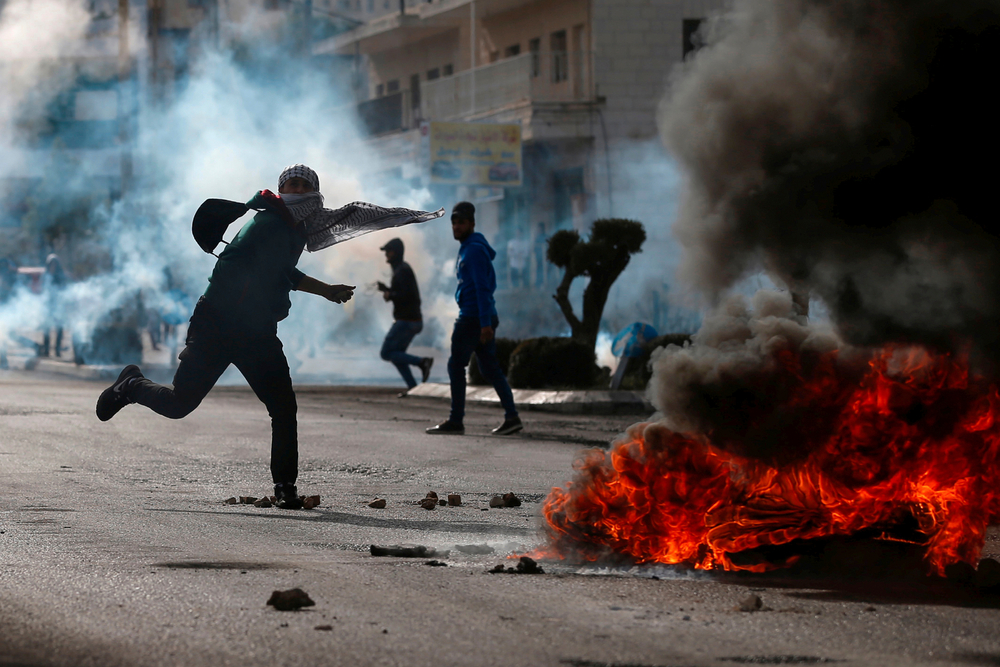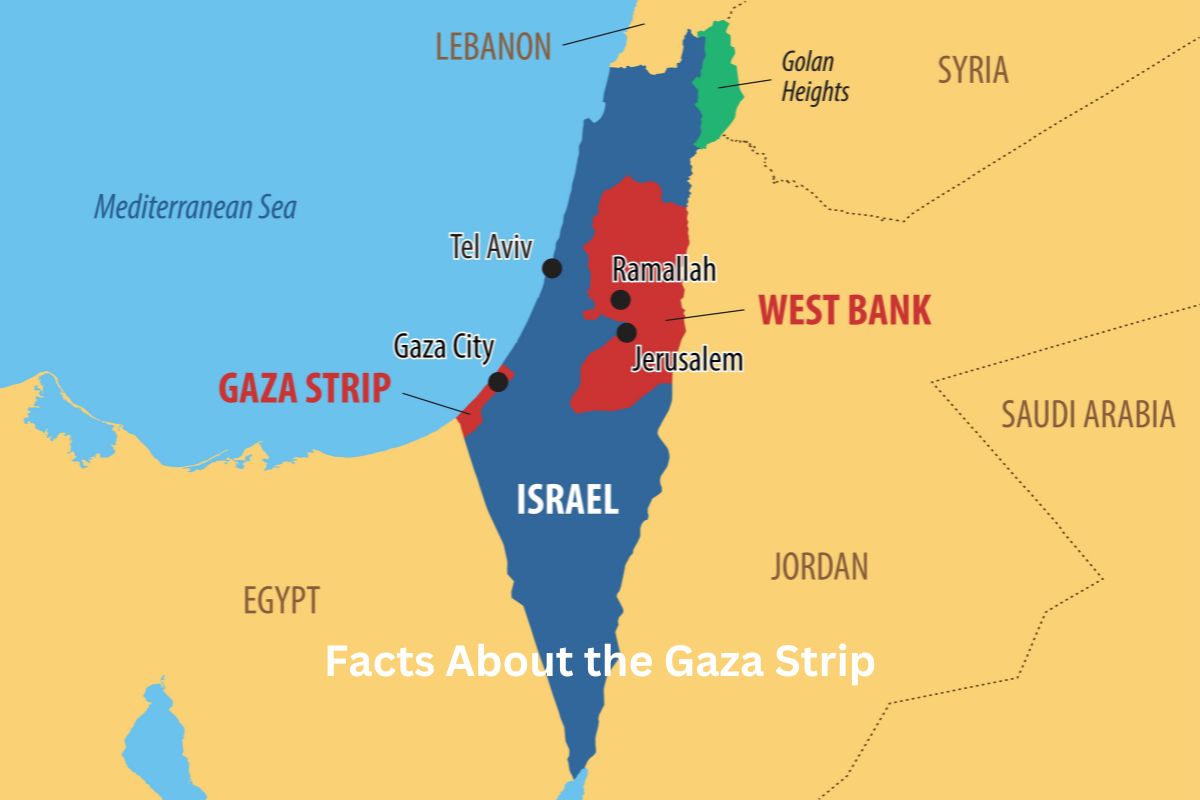The Gaza Strip, a small but densely populated territory along the Mediterranean coast, is at the heart of the Israeli-Palestinian conflict.
With a complex history, it has witnessed a series of significant events, from historical empires to modern political divisions.
This strip of land, home to over 2 million Palestinians, has faced challenges such as blockades, conflicts, and a humanitarian crisis, all of which continue to shape its uncertain future.
In this overview, we delve into the key facts and dynamics that define the Gaza Strip’s unique place in the Middle East.
The Gaza Strip Facts
1. Small territory along the Mediterranean Sea
The Gaza Strip is a narrow piece of land located along the eastern coast of the Mediterranean Sea.
Also Read: Gaza Timeline
It is roughly 25 miles (40 kilometers) long from north to south and only about 7 miles (11 kilometers) wide at its widest point.
This small geographic size makes it one of the most compact regions in the world.

2. Highly densely populated with over 2 million people
Despite its limited land area, the Gaza Strip is home to a significant population it has an estimated population of over 2 million people.
Also Read: Timeline of the Middle East
The population density in Gaza is exceptionally high, with thousands of residents per square kilometer, which contributes to the region’s overcrowding and limited living space.
3. Predominantly Palestinian
The Gaza Strip is predominantly inhabited by Palestinians, who are ethnically and culturally linked to the broader Palestinian population in the West Bank, East Jerusalem, and other parts of the Middle East.
Palestinians in Gaza have a distinct cultural identity and share a common desire for self-determination and statehood.
The region has been a focal point of the Israeli-Palestinian conflict and the broader Arab-Israeli conflict due to its Palestinian population and its historical significance.
4. History of various rulers, including Egyptian, Roman, Ottoman, and British
The history of the Gaza Strip is rich and complex. It has been inhabited and controlled by various empires and civilizations throughout the centuries. Some notable historical facts include:
It was part of ancient Egyptian and Roman territories. During the Ottoman Empire, it was under Ottoman rule for several centuries.
In the 20th century, it was governed by the British Mandate for Palestine.
Following the 1948 Arab-Israeli War, Egypt administered the Gaza Strip, while the West Bank came under Jordanian control.

5. Occupied by Israel from 1967 to 2005
In the aftermath of the Six-Day War in 1967, Israel captured the Gaza Strip, along with the West Bank, East Jerusalem, and other territories.
Israel maintained a military and civilian presence in Gaza for nearly four decades, during which time Israeli settlements were established in the territory.
The Israeli presence in Gaza resulted in significant tensions and conflicts with the Palestinian population.
6. Controlled by Hamas since 2007
In 2005, Israel unilaterally withdrew its settlers and military forces from the Gaza Strip, a move known as the “Gaza Disengagement Plan.”
Following the withdrawal, the Palestinian Authority (PA), led by Fatah, assumed control of the Gaza Strip.
However, in 2007, a violent conflict erupted between Fatah and Hamas, leading to Hamas taking control of the Gaza Strip. Since then, Hamas has governed the territory, while Fatah retains control of the West Bank.
This political division between Hamas and Fatah has deepened the Palestinian political schism and created challenges for national reconciliation efforts.
7. Subject to a blockade by Israel and Egypt
Since 2007, Israel, along with Egypt, has imposed a blockade on the Gaza Strip. The blockade includes restrictions on the movement of people, goods, and services in and out of Gaza.
The primary reason cited for the blockade is security concerns, particularly related to the smuggling of weapons and materials that could be used for military purposes.
The blockade has had a profound impact on the lives of the people in Gaza, limiting access to essential goods, healthcare, and education. It has also severely hampered economic development.
8. Frequent conflicts with Israel
The Gaza Strip has been a frequent site of conflict between Israeli military forces and Palestinian armed groups, particularly Hamas.
There have been several military operations and conflicts in the area, with periodic outbreaks of violence leading to loss of life, injuries, and extensive damage to infrastructure.
The cycle of violence in Gaza has resulted in significant humanitarian suffering and has drawn international attention and concern.

9. Humanitarian crisis due to restrictions and conflict
The combination of the blockade, ongoing conflict, and political instability has led to a severe humanitarian crisis in the Gaza Strip.
Access to clean water, electricity, and healthcare services is limited. Educational facilities have also been affected.
High unemployment rates, especially among young people, have contributed to economic hardships and poverty.
10. Significant Palestinian refugee population
The Gaza Strip is home to a significant population of Palestinian refugees and their descendants. Many of these refugees were displaced during the 1948 Arab-Israeli War (also known as the Nakba) and subsequent conflicts.
The United Nations Relief and Works Agency for Palestine Refugees (UNRWA) provides assistance and support to Palestinian refugees in Gaza and other areas.
The presence of a large refugee population adds to the complexity of the social, economic, and political situation in the Gaza Strip.
